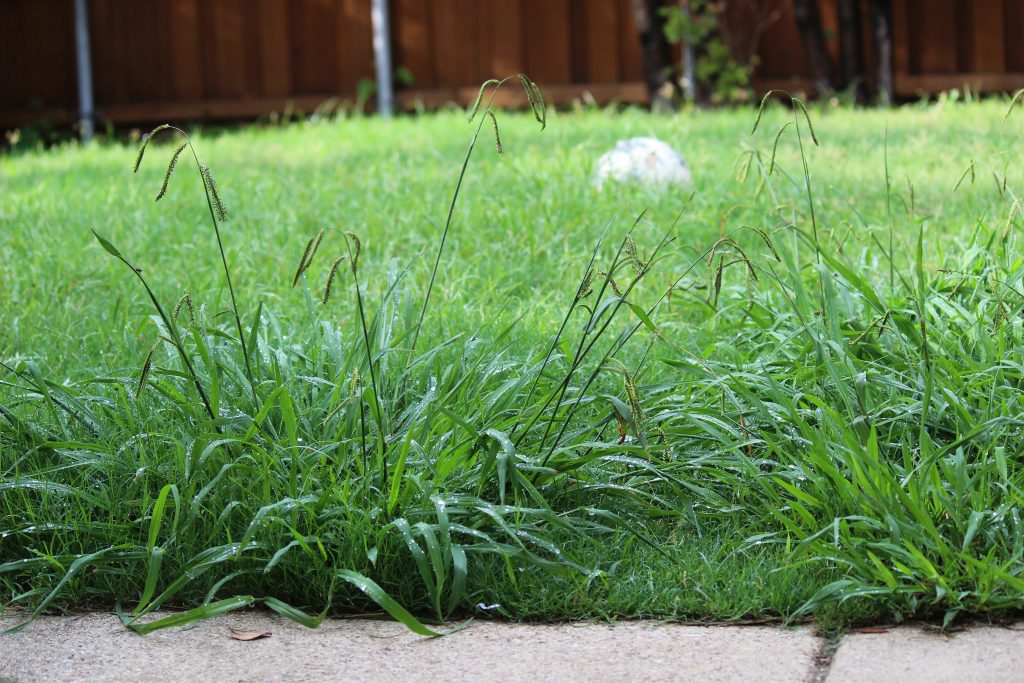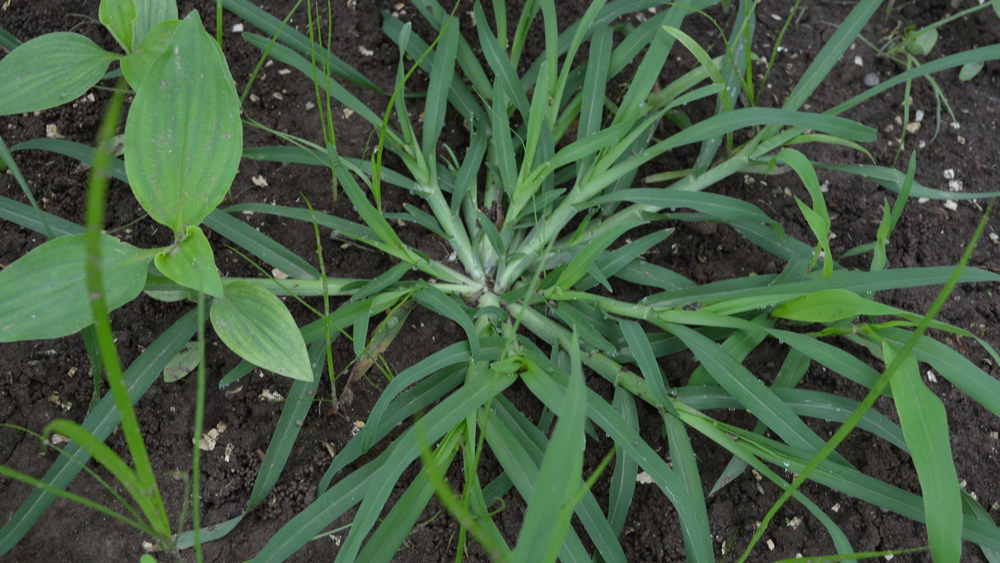
Crabgrass is the ultimate unwanted guest for your lawn. Along with dollar weed and Florida pusley, crabgrass is the scourge of South Florida homeowners and businesses struggling to maintain their lawns. The tenacious weed is a formidable opponent, but crabgrass can be defeated with the right approach and a little patience.
Maybe you have heard of crabgrass but are not quite sure what it looks like compared to other common weeds. So, If you are standing out on your lawn scratching your head, asking, “what does crabgrass look like?” Then, this is the guide for you. We will cover what crabgrass looks like in South Florida, why it is such a pernicious pest to lawns, how to vanquish it, and how to keep it from making a return on your lawn.

What Does Crabgrass Look Like? Identification Tips
Crabgrass is a member of the plant genus Digitaria that includes both annual and perennial grasses. Crabgrass is actually not a grass at all, it is an annual weed (one that grows from a seed, sprouts for a year, and then dies). This is important to note because it plays a significant role in prevention. Stopping Crabgrass seeds from germinating will stop the plant. However, if you don’t properly plan your prevention efforts and miss the germination period, you will be stuck with the weed for another year. The plant is noted for having many legs, or stems, and for growing low to the ground, which are two reasons why it is so difficult to eradicate.
The two types of crabgrass are “smooth” and “hairy”:
- Smooth crabgrass is more prevalent and has only a few hairs located at its auricles, which are the small, ear-like projections on the inside of the base of its leaves. The leaf blades grow as long as 5 inches and taper to a point. The plant’s stems form angles at their nodes that sometimes turn red.
- Hairy crabgrass is covered in small hairs and tends to be larger than its smooth counterpart, which is why it’s sometimes referred to as “large crabgrass.” (Similarly, smooth crabgrass is sometimes called “small crabgrass.”) It is less common than smooth crabgrass.
A defining characteristic of crabgrass is how tough it is to break. The low-lying leaves and the upright stalk that bears its flowers and seeds can withstand being stepped on repeatedly. This explains why crabgrass thrives in so many areas, such as poking between cracks in sidewalks and roadways.
How Crabgrass Affects Homes and Commercial Properties
As most South Florida property owners know, crabgrass is a summer annual with an amazing ability to propagate. One plant can produce between 150 and 700 tillers or new grass shoots and up to 150,000 seeds. Crabgrass’s ability to evade lawnmowers allows the plant to produce seeds when it’s only a half-inch tall.
Crabgrass seeds lie dormant until the ground temperature reaches 55°F for several days in a row. Once the seeds begin to germinate, beginning in early spring, they continue to do so through late summer. The hearty plant can withstand a range of temperatures and dry weather conditions, but it thrives in hot weather and abundant sunlight, which explains its prevalence in South Florida.
Once crabgrass takes hold, it can devastate a lawn in a matter of weeks, especially in summer, when perennial turf grasses tend to grow more slowly than in the spring and fall. In addition to being plain-old ugly, crabgrass is opportunistic, taking root in thin and patchy lawns or that have been damaged by insects or by overmowing. When it grows through cracks in driveways and walkways, the plant contributes to further cracking in addition to being unsightly.
How to Remove Crabgrass Without Damaging Your Lawn
Typical weed-and-feed fertilizers won’t kill crabgrass because they include “selective” herbicides that target specific broadleaf weeds such as dandelions. “Non-selective” herbicides are a poor choice because they kill all plant types, including turfgrasses. Lawn care professionals know the exact right post-emergent herbicides to eliminate crabgrass safely and completely.
Rather than waiting for crabgrass to invade your lawn, you can take the initiative by applying a pre-emergent regimen to your lawn that targets germinating seeds before they can sprout. However, the pre-emergent herbicide may also inhibit the growth of lawn grass seed, so the application has to be timed so as not to impact your lawn’s ability to regenerate.
Getting Started With Nozzle Nolen
Crabgrass may be the most noticeable of the pests that invade lawns in South Florida, but it’s far from the only one. Chinch bugs, grubs, and weeds of every size and description can also plague the lawns of homeowners and businesses. When you sign up for a lawn care service such as Nozzle Nolen’s, you benefit from the expertise and training of experienced lawn care professionals as well as professional pest control specialists.
At Nozzle Nolen, we love to educate just as much as we love to help with pest problems. So if you would like more information on what crabgrass looks like or our professional lawn services, call us at 1.800.226.6536 or Contact Us. We look forward to serving you.




